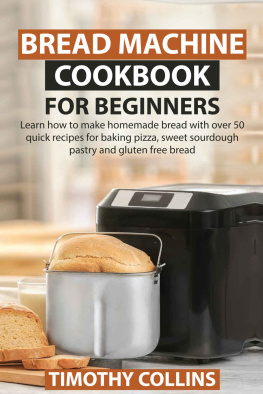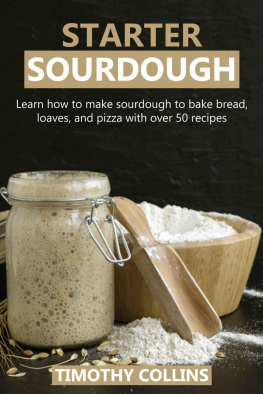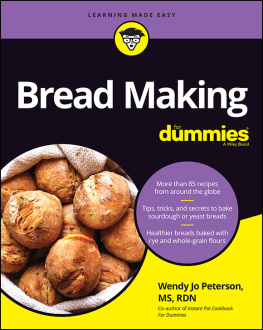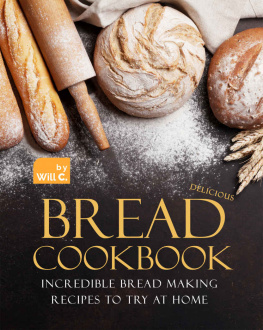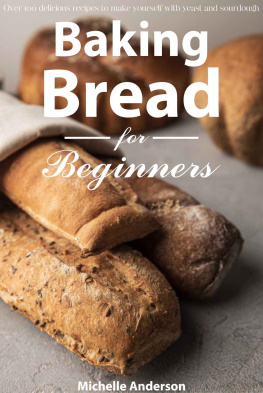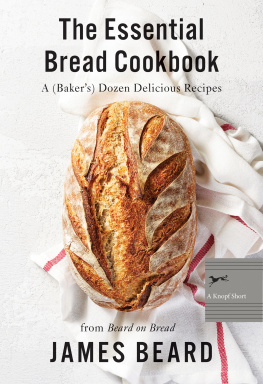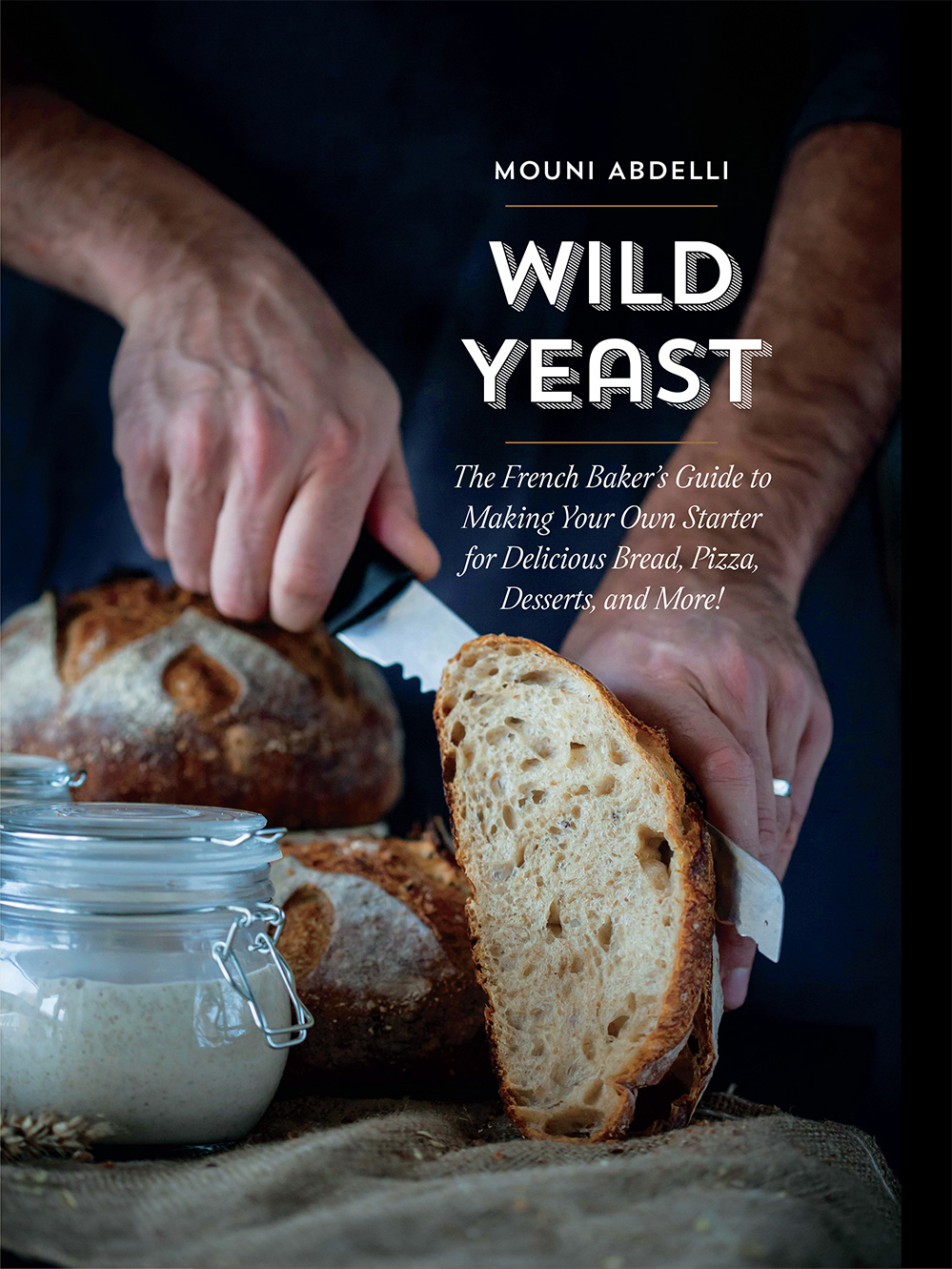MOUNI ABDELLI
Wild
Yeast

The French Bakers Guide
to Making Your Own Starter
for Delicious Bread, Pizza,
Desserts, and More!

Wild Yeast: The French Baker's Guide to Making Your Own Starter for Delicious Bread, Pizza, Desserts, and More!
Mouni Abdelli
Editor: Kelly Reed
Translation: Marie Deer
Copyeditor: Barbara Richter
Proofreader: Elizabeth Welch
Graphic design and layout: Anne Krawczyk
Layout and Cover Production: Randy Miyake
Project manager: Lisa Brazieal
Marketing coordinator: Mercedes Murray
All photographs and illustrations Mouni Abdelli
ISBN: 978-1-68198-699-9
1st Edition (1st printing, December 2020)
Original French title: Faire son levain
2018 ditions Eyrolles, Paris, France
French ISBN: 978-2-212-67504-7
Rocky Nook Inc.
1010 B Street, Suite 350
San Rafael, CA 94901
USA
www.rockynook.com
Distributed in the UK and Europe by Publishers Group UK
Distributed in the U.S. and all other territories by Ingram Publisher Services
Library of Congress Control Number: 2020941837
All rights reserved. No part of the material protected by this copyright notice may be reproduced or utilized in any form, electronic or mechanical, including photocopying, recording, or by any information storage and retrieval system, without written permission of the publisher.
Many of the designations in this book used by manufacturers and sellers to distinguish their products are claimed as trademarks of their respective companies. Where those designations appear in this book, and Rocky Nook was aware of a trademark claim, the designations have been printed in caps or initial caps. All product names and services identified throughout this book are used in editorial fashion only and for the benefit of such companies with no intention of infringement of the trademark. They are not intended to convey endorsement or other affiliation with this book.
While reasonable care has been exercised in the preparation of this book, the publisher and author assume no responsibility for errors or omissions, or for damages resulting from the use of the information contained herein or from the use of the discs or programs that may accompany it.
This book is printed on acid-free paper.
Printed in China
CONTENTS
INTRODUCTION
In this age where everything goes too fast, can we reclaim the pleasure we get from doing simple things that require a little more patience? In our frantic race toward greater productivity and less personal satisfaction, is it so crazy to hope that we could take a step back with respect to the most basic elements of our daily life, things like making our own bread?
I remember my mother and the ritual with which she made bread: the choice of ingredients; the kneading, which she often did by hand; the traditions, like not leaving the doors open to avoid the drafts that might have affected the rising of the dough.... As children, we never asked questions; we were too busy waiting for the bread to be baked so that we could savor it hot, just plain or covered with a thin film of good farm butter. There was something magical in that moment! A magic that we have forgotten over time, as rushed as we are!
What if, finally, the most important ingredient in making true good bread is simply time? I asked myself that question recently, after having spent some time pleasantly examining a batch of bread dough as though it were the most fascinating thing in the world. What is satisfying to me is rediscovering real bread, bread that takes time to make but is so worth it.
I also learned that this slow process could not only bring me a great deal of pride but could also be healthier. For a very long time, I thought it was a wonderful thing to be able to bake up a loaf of par-baked bread in less than 30 minutes. But over time, I began to enjoy it less and less and even found it harder and harder to digest, and I was far from being alone in that....
If you think about it, bread, the idea of bread, is both extremely simple and very complex. Some flour, some water, some saltthese ordinary ingredients are enough to produce this divine food. So how can we help but be amazed by this process that has allowed the human race to benefit from wheat in so many ways, by this mixture that, once transformed, can give rise to an entirely different food, one that is fragrant, richly savory, and that stimulates every one of our senses?
Have you ever tried to chew a few grains of raw wheat? Not only is it very tough, but there isn't much to be gained from it. The transformation of the grains, however, allows us to develop a multitude of nutrients and flavors that continue to give us pleasure with every bite of bread that we take.


AN ANCIENT FOOD
For centuries, before instant baking yeast was developed and then marketed commercially, our ancestors produced nutritious breads using natural leavening. The development of a natural wild yeast, then, is simply a return to the origins of breadmaking.
At first, grains were eaten in the form of a mash, a little like porridge, and in Europe, it was usually made with rye. We would have a hard time recognizing the connection between that food and the bread that we eat today. The origins of the first bread made from wild yeast are hazy, but several sources attribute it to the Egyptians: someone supposedly, probably by accident, left a mixture of raw grains out somewhere that was exposed to the air and to wild yeast at ambient temperature, which gave it the opportunity to ferment and to swell. This process would have had to be followed by baking (someone had to think of that!), and that is supposedly how the ancestor of bread made from wild yeast was born!
Be that as it may, bread made from a natural starter is the result of a slow process that drew on wild yeast and bacteria, mainly lactobacilli. For more than five thousand years, bread was only produced through the synergy of these two microorganisms. Their combination allows bread to rise and gives it a lot of flavor, but it also allows the mixture's full nutritional potential to emerge. Baker's yeast, on the other hand, with its very quick acting time, has drastically reduced fermentation time, which is essential to the complex development of bread's aromas and digestibility.
THE BENEFITS OF BREAD MADE FROM WILD YEAST
The digestibility and the nutritiousness of bread that has been fermented through this process are very important points. The process of breadmaking using a natural wild yeast starter, which is a result of the action of lactic acid bacteria that break down sugars and thus produce lactic and acetic acids, lowers the pH of the dough and thus makes it more acidic. This acidification has a number of benefits. Grains contain phytic acid, which is present in large quantities in whole grains because it is mostly concentrated in the husk of the grain. But this phytic acid interferes with the proper assimilation of the minerals that are present in the grain. The acidification of the dough activates an enzyme called phytase, which allows the phytic acid to be broken down. This is why the slower preparation time is important: the more slowly the dough ferments, the more time the enzyme has to act and, therefore, to allow for the release and assimilation of all of this mineral potential. In addition, this acidification makes it possible for the bread to keep longer, unlike breads and other baked goods that are made quickly using baker's yeast, which tend to dry out as quickly as they are made.


